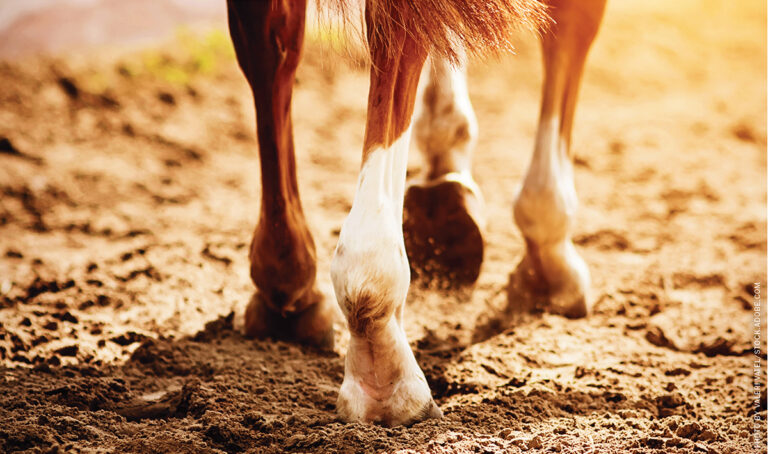If your otherwise healthy horse consistently flares up with coughs, sneezes, a runny nose, and heavy breathing in the fall, allergies might be to blame. Not unlike humans, horses can be sensitive to dust, mold, and other irritants in their environment, and show signs of respiratory irritation. The condition and reaction ranges from some irritation to allergies to seasonal asthma, which is a type of asthma triggered by allergens that appear at certain times of year.
The symptoms aren’t only just a nuisance or slightly uncomfortable, as they are when you experience them, but they also impact performance. If you’re showing or would simply like to take your horse out to the trail before the weather takes a turn, his allergy symptoms can put a damper on your plans. Given that horses’ environments are inherently dusty and that even high-quality hay is susceptible to low-level mold, completely eliminating respiratory irritants is out of the question. However, there are some steps you can take to manage their exposure and keep them comfortable and nearly symptom free.

Turn out: While grass can become sparse at the end of summer and into fall, try to make as much use out of the pasture as possible without overgrazing. This allows your horse to be out of dustier areas, such as a stall with straw or shavings, or a dry lot, as much as possible while allergies are flared up.
Does Your Horse Have Nasal Discharge? Read More.
Opt out of round bales: Depending on your feed schedule, it may not be an option to avoid round bales, however; if you can choose smaller, rectangular bales, you’re more likely to reduce mold and dust exposure. While all hay will have some dust, and even the best quality hay will have some mold, rectangular bales are easier to store so less likely to be left uncovered to accumulate and/or develop dust and mold.
Choose alternative feeds: Haylage and hay pellets or cubes are also viable hay alternatives that cut back on dust and mold in cases where soaking or steaming isn’t practical. An automatic feeder can make feeding hay pellets a little less cumbersome as it allows you to feed in smaller disbursements throughout the day rather than only a couple times per day.
Feed down low: The most natural feeding position is for your horse to have their head down low. Regardless of the form of feed you choose, feed from ground level. It’s has been shown to allow a horse’s airways to drain properly and improve respiratory health. A low feeder or trough will ensure that the hay isn’t on the ground, potentially stirring up and collecting more dust or bedding particles.
Try supplements: Along with quality feed and an effective management process, you might test the impact of some supplements. Some horses have responded well to docosahexaenoic acid (DHA), a type of omega-3, and other supplements such as MSM, some mushrooms, and vitamin C.
Consider medication management: If your horse continues to show signs of asthma despite your best efforts to manage their environment and feed, your veterinarian may prescribe treatment with aerosolized corticosteroids to manage symptoms during allergy season.
Avoid the harvest: If you’re in an area where crops are harvested and you have the option to pull your horse inside, also assuming the stall or area you bring them into has relatively low dust or mold, do so. Swathers and combines stir up dust and crop particles, and can exacerbate your horse’s asthma symptoms.
Learn More: What You Need to Know About Equine Asthma
Invest in better bedding: Bedding that’s traditionally used in stalls and other areas, such as straw and shavings, are dusty, especially if they’re fresh. Choose bedding that’s absorbent and has antibacterial properties to further reduce dust and mold.
Regardless of the efforts you take, understand that at least seasonal allergies and asthma-like symptoms will pass. Work to keep your horse comfortable as best as you can as you get through the period.
Soak and Steam

Wetting your horse’s hay can significantly reduce the amount of mold and dust present. A hay steamer is a simple way to reduce the irritants in your horse’s hay. They also have the benefit of removing bacteria from the hay. Soaking, on the hand, is a much more accessible option but can introduce bacteria during the process.






